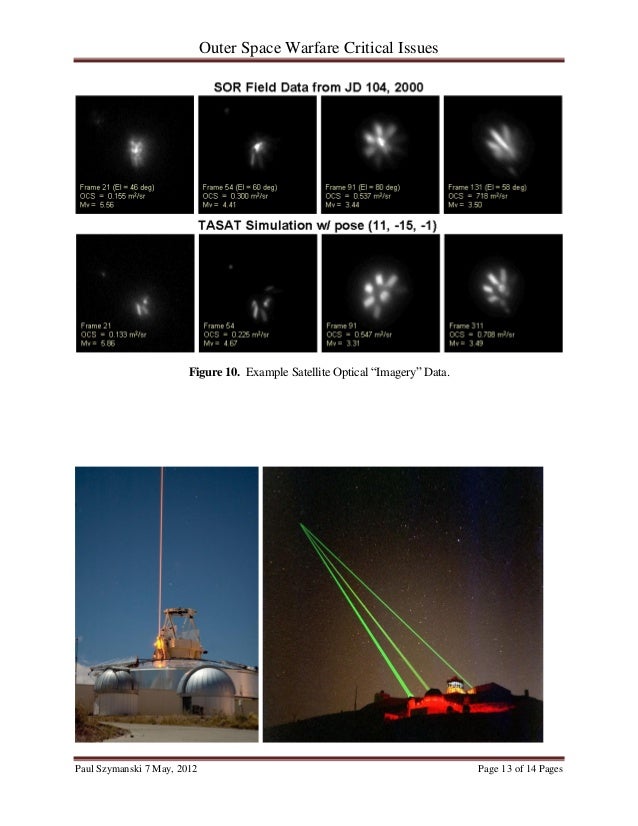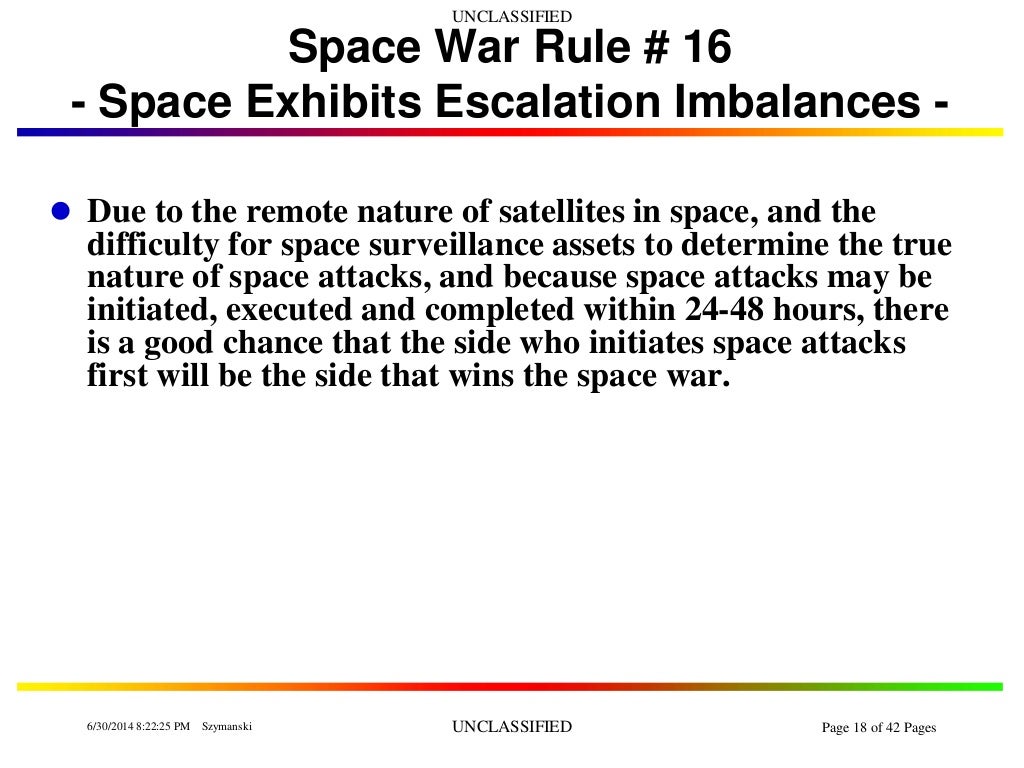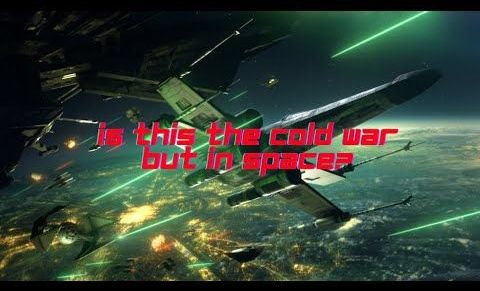

#Rules on space warfare manual
Both the Manual on International Law Applicable to Military Uses of Outer Space (MILAMOS) and the Woomera Manual on the International Law of Military Space Operations attempt to draw from other relevant manuals, such as the San Remo Manual or the Tallinn Manual which contain soft law rules on armed conflicts at sea and, respectively, on cyberspace conflicts. In the absence of a Space Warfare Manual, the legalities of space are somewhat considered analogous to the high seas This is an attempt, once we leave airspace. The international legal community has promoted two initiatives, with the aim of drafting a manual on the applicability of international law in the context of space military operations.


Currently, there is no clarity as to the interpretation of international legal norms in the particular context of outer space warfare. However, as technological development progressed and states incurred new vulnerabilities from their dependence on space-located assets, the danger of conflict in this new realm also increased, thus transforming outer space into an area of confrontation. Summary/Abstract: Beginning with 1966, under the aegis of the United Nations, five international treaties covering various aspects of states’activities in outer space came into existence, the most important being the Treaty on Principles Governing the Activities of States in the Exploration and Use of Outer Space, including the Moon and Other Celestial Bodies or “the Outer Space Treaty” (OST). Published by: Asociația română de drept internațional și relații internaționale Keywords: Outer Space Treaty geostationary orbit delimitation customary international law res communis P19All the weapon systems described here are not prohibited by the Outer Space Treaty and do not fall foul of any other specific weapons-based treaty or IHL. Legal Implications of Outer Space Warfare (Part I) Author(s): Andreea Zalomir Legal Implications of Outer Space Warfare (Part I)


 0 kommentar(er)
0 kommentar(er)
